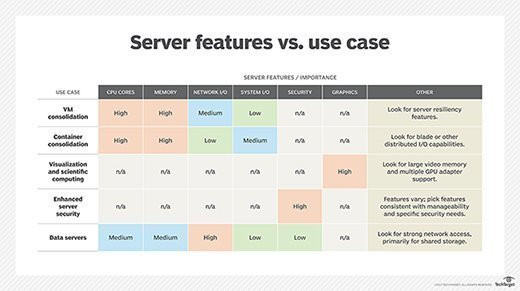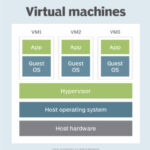In the realm of computing, the term “server” is fundamental, yet it encompasses a range of meanings depending on the context. At its core, a server is a computer program or a dedicated device that delivers a service to another computer program and its user, known as the client. Within a data center environment, the physical machine housing a server program is also commonly referred to as a server. This machine can be exclusively dedicated to server functions or serve multiple purposes.
Within the client-server model, a server program is designed to respond to requests initiated by client programs. These client programs can operate on the same machine or across a network on different computers. It’s also important to note that a single application within a computer system can act as both a client, requesting services, and a server, fulfilling requests from other programs, showcasing a dynamic interplay of roles.
How Servers Operate
The term “server” can denote a physical machine, a virtual machine (VM), or specialized software designed to provide server functionalities. The operation of servers varies depending on the specific interpretation of the term “server.” Server operating systems (OSes), such as Windows Server 2022, are engineered to efficiently manage client service requests within a network, establishing connections with the necessary resources. Servers configured for specific services streamline access to specialized resources like printer drivers or applications focused on tasks such as file storage.
Physical vs. Virtual Servers
A physical server is essentially a computer utilized to execute server software. The distinctions between a server and a typical desktop computer are detailed in the subsequent section.
 Photo of a rack server.
Photo of a rack server.
A virtual server represents a software-based emulation of a physical server. Similar to its physical counterpart, a virtual server is equipped with its own operating system and applications. These components are isolated from other virtual servers operating on the same physical server, ensuring resource segregation and stability.
The creation of VMs involves installing a hypervisor, a lightweight software layer, onto a physical server. The hypervisor’s role is to transform the physical server into a virtualization host. This host then allocates the physical server’s hardware resources—including CPU processing power, memory, storage capacity, and network bandwidth—to one or more virtual machines.
An administrative console empowers administrators to dynamically allocate hardware resources to each virtual server. This approach significantly reduces hardware expenditures, as a single physical server can host numerous virtual servers, eliminating the need for dedicated physical servers for each individual workload.
Server Software Essentials
At a minimum, a server environment necessitates two critical software components: an operating system and a server application. The OS serves as the foundational platform for running the server application, providing essential access to computer networks and underlying hardware resources, such as storage devices. It also delivers the necessary dependency services required by the application to function correctly.
The OS is instrumental in enabling the server application to effectively process client requests. For instance, the server’s Internet Protocol (IP) address and fully qualified domain name are configured and managed at the OS level, providing network identity and accessibility.
Cloud Servers vs. On-Premise Servers
Mirroring the characteristics of most cloud services, cloud servers offer a highly adaptable and scalable computing environment. They negate the requirement for physical space and equipment racks typically associated with housing hardware servers, often presenting a cost-effective solution for small to medium-sized businesses. However, adopting cloud servers entails relinquishing a degree of direct control over the server infrastructure.
Conversely, on-premise servers grant organizations complete control over their servers and associated resources. However, this control comes with the responsibility of providing physical space for server housing, managing heating, ventilation, and air conditioning (HVAC) systems, and implementing robust physical security measures to prevent unauthorized access. This model is commonly favored for enterprise-level applications, where organizations deploy numerous servers within dedicated data centers.
A hybrid configuration, integrating both on-site and cloud server resources, offers a balanced approach, allowing organizations to leverage the benefits of both deployment models.
Desktop Computers vs. Servers: Key Differences
While desktop computers and servers share functional similarities, there are critical distinctions in their design and capabilities. Most servers are built upon x86/x64 CPUs and are capable of executing the same code as x86/x64 desktop computers. However, unlike typical desktops and laptops, physical servers frequently incorporate multiple CPU sockets and error-correcting memory, significantly enhancing processing power and data integrity. Servers are also designed to support substantially larger amounts of memory compared to most desktop computers, crucial for handling demanding workloads.
Given that server hardware often underpins mission-critical operations, server manufacturers and service providers prioritize redundancy in component design. Servers may feature redundant power supplies and network interfaces, ensuring continuous operation even in the event of a component failure.
Server hardware also diverges from desktop hardware in its physical form factor. Modern desktops are often compact mini-towers or portable laptops. In contrast, most servers are designed for rack mounting, adhering to standardized dimensions (1U, 2U, or 4U) to optimize space utilization within data center racks.
 Table showing server features needed for various use cases.
Table showing server features needed for various use cases.
Another significant difference lies in the operating systems. Desktop OSes, like Windows 10 and Windows 11, may offer limited server-like functionalities but are not designed or licensed to substitute dedicated server OSes.
While some editions of Windows 10 and 11 include Hyper-V, Microsoft’s virtualization platform, its primary purpose in desktop OSes is for VM development, unlike Windows Server 2022 Hyper-V, which is optimized for running production virtual servers with enhanced resiliency features like VM replication and integration with Azure for cloud-based disaster recovery.
Similarly, desktop OSes can facilitate file sharing on local networks, but Windows Server 2022 excels as a full-featured file server, offering advanced features like the Resilient File System (ReFS) for robust data protection and distributed file system capabilities for enhanced performance and scalability in larger organizations.
Diverse Types of Servers
Servers are often categorized based on their specific functions. Common server types include:
- Web Server: Delivers requested HTML webpages or files, with web browsers acting as clients.
- Application Server: Provides the business logic for application programs within a distributed network.
- Domain Name System (DNS) Server: Translates domain names into IP addresses, essential for internet navigation.
- Proxy Server: Acts as an intermediary between client devices and other servers, managing requests and responses.
- Game Server: Supports the infrastructure for online multiplayer computer games and similar interactive applications.
- Mail Server: Manages incoming and outgoing emails for local and remote users.
- Virtual Server: A software-defined server running on a shared physical server, providing users with the illusion of dedicated server control.
- Blade Server: A server chassis housing multiple modular server blades, each functioning as an independent server, often dedicated to specific applications.
- File Server: Centralizes storage and management of data files, enabling network-wide file access and sharing.
- Policy Server: A security component within policy-based networks, managing authorization and access control to files and resources.
- Database Server: Hosts and manages databases, processing client queries for data retrieval and manipulation.
- Print Server: Manages network-connected printers, queuing and prioritizing print jobs from users.
Essential Server Components
Servers are composed of various hardware and software components working in concert.
Hardware Components
At the hardware level, servers typically feature a rack-mountable chassis containing a power supply, system board, one or more CPUs, memory modules, storage drives, a front control panel, rear connectors, and network interfaces.
Most server hardware incorporates out-of-band management through a dedicated network port. This enables low-level server management and monitoring, independent of the operating system. Out-of-band management systems facilitate remote server power control, OS installation, and comprehensive health monitoring.
Operating System Software
A server OS, such as Windows Server 2022 or Linux distributions, serves as the foundational platform for applications. The OS provides applications with access to necessary hardware resources and establishes network connectivity.
Applications are the driving force behind server functionality. For instance, a database server runs database applications, and an email server operates mail applications, each tailored to their specific service delivery role.
Selecting the Appropriate Server
Choosing the right server involves considering numerous factors, including virtualization needs and workload consolidation requirements. Evaluating the importance of specific server features based on intended use cases is crucial. Small businesses, in particular, may have unique server requirements to consider.
Security capabilities are paramount. Features like data encryption for data in transit and at rest, and persistent event logging for audit trails are essential for robust server security.
If relying on internal server storage, the selection of disk types and storage capacity significantly impacts input/output performance and data resilience.
Many organizations are optimizing their data centers by reducing physical server counts through virtualization, enabling fewer servers to handle more workloads. Cloud computing adoption has further reshaped server infrastructure strategies.
Consolidating capabilities into fewer physical units reduces capital expenditure, data center footprint, and power and cooling demands. However, increased workload density elevates risk, as server failures or maintenance downtime can impact a broader range of services. Server OSes like Windows Server 2022 incorporate features to mitigate these risks, ensuring data protection and facilitating disaster recovery.
To streamline server selection, consider these key steps:
- Secure management buy-in for server modifications and budget allocation.
- Define workload requirements, including application types and data volumes.
- Establish a comprehensive budget encompassing hardware, software, infrastructure, support, and security.
- Determine production environment needs, including user and workload counts, and networking requirements.
- Choose an OS based on workloads, administration needs, and team expertise.
- If selecting a physical server, define the form factor and location, considering space, efficiency, and security.
- Develop a virtual server model to evaluate options and compare physical server alternatives.
To maintain optimal server performance, routine maintenance is essential. Consider utilizing a server maintenance checklist to ensure consistent upkeep.

